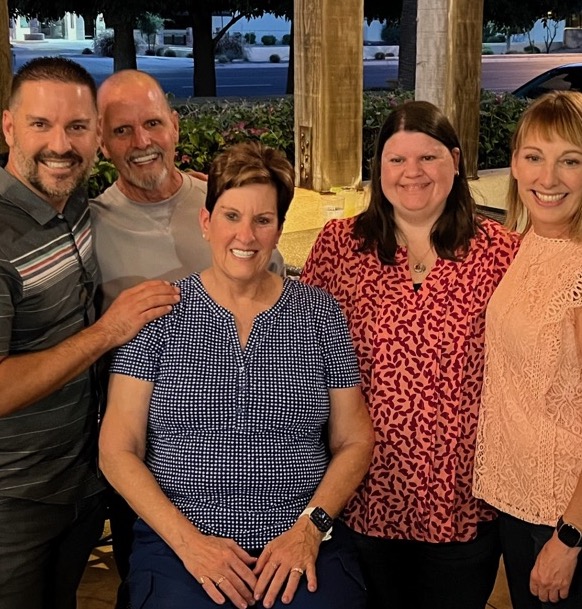A Plain-English Guide to RMDs, Gifting, Catch-Up Contributions, and More for 2025
Since the onset of COVID-19, Congress has passed sweeping changes to the U.S. tax code—many of which have lasting implications for retirees, investors, and families focused on building wealth or leaving a legacy.
At Strategic Income Group (SIG), we help clients understand these changes through the lens of biblical stewardship and our proprietary Three Phases of Wealth® framework:
- Phase I: Foundation – Building the right habits and financial protections
- Phase II: Accumulation – Growing wealth with tax efficiency and wisdom
- Phase III: Strategic Income – Distributing wealth in alignment with your purpose and legacy
Here’s a detailed breakdown of the post-COVID tax changes you should be aware of in 2025—and how they may impact your financial strategy.
1. RMD Age Changes: Understanding the New Timeline
What Is an RMD?
A Required Minimum Distribution (RMD) is the minimum amount the IRS requires you to withdraw annually from your pre-tax retirement accounts (such as IRAs and 401(k)s) once you reach a certain age. These withdrawals are taxable.
What Changed?
| Before 2020 | SECURE Act 1.0 | SECURE Act 2.0 | Future Change |
|---|---|---|---|
| Age 70½ | Increased to 72 | Now 73 (as of 2023) | Will rise to 75 (starting in 2033) |
This change gives retirees more flexibility, but it can also lead to larger RMDs later—potentially pushing you into higher tax brackets in your 70s and 80s if not planned for carefully.
Planning Tip: Use the years between retirement and your RMD start age (often called the “tax planning window”) to explore Roth conversions, charitable strategies, or other tax-reduction techniques.
2. Gifting Limits and Estate Exemptions: A Narrowing Window
What Is the Annual Gifting Limit?
Each year, the IRS allows you to gift a certain amount of money to anyone—completely free of gift tax or impact to your lifetime estate exemption.
- 2025 Annual Gift Exclusion: $18,000 per person
- Married couples: Can give $36,000 jointly to each recipient
What Is the Lifetime Estate & Gift Tax Exemption?
This is the total amount of wealth you can give away (during life or at death) without incurring federal estate or gift taxes.
- 2025 Amount: $13.61 million per person
- Important Note: This amount is expected to be cut in half in 2026 (back to around $6–7 million), unless new laws are passed.
Planning Tip: If you have significant wealth, now may be the time to begin gifting proactively to children, grandchildren, or charitable trusts.
Explore Estate & Legacy Planning with SIG
3. Catch-Up Contributions: Saving More Near Retirement
What Are Catch-Up Contributions?
These are extra contributions allowed by the IRS for individuals age 50 and older to help “catch up” on retirement savings.
| Retirement Plan | Standard Contribution | Catch-Up (50+) | Total Allowed in 2025 |
|---|---|---|---|
| 401(k) or 403(b) | $23,000 | $7,500 | $30,500 |
| Traditional or Roth IRA | $7,000 | $1,000 | $8,000 |
New for 2025:
If you’re between ages 60–63, you can contribute even more to your workplace plan:
- Up to $10,000 or 150% of the standard catch-up (whichever is greater), indexed for inflation.
Roth Catch-Up Requirement (Delayed):
Starting in 2026, high earners (earning over $145,000) must make their catch-up contributions into a Roth 401(k) instead of a traditional one—meaning it’s taxed now, but grows tax-free.
4. Roth Conversions: A Strategic Window Before RMDs
What Is a Roth Conversion?
A Roth conversion allows you to move funds from a traditional IRA (tax-deferred) into a Roth IRA (tax-free growth). You pay income taxes on the amount converted now, but you avoid future RMDs and get tax-free withdrawals later.
Why Now?
With RMDs starting later (age 73 or 75), retirees often have several low-income years where their tax bracket drops. This is an ideal window to convert assets at lower tax rates and reduce the size of future taxable RMDs.
👉 Learn more about Roth Strategies and Modeling
5. Qualified Charitable Distributions (QCDs): Giving That Lowers Taxes
What Is a QCD?
A Qualified Charitable Distribution allows IRA owners age 70½ or older to give directly to a qualified charity from their IRA—tax-free.
- Limit: $100,000 per person, per year (indexed for inflation starting in 2024)
- Can count toward your RMD if over age 73
- Reduces taxable income without requiring itemized deductions
Example: If your RMD is $40,000 and you donate $15,000 via a QCD, only $25,000 will be included in your taxable income.
Why It Matters: This is one of the most efficient ways for retirees to give generously while reducing taxes.
6. 529-to-Roth IRA Transfers: A New Way to Repurpose College Funds
What’s New?
Starting in 2024, the IRS allows you to transfer unused 529 plan assets to a Roth IRA for the beneficiary (often a child or grandchild).
- Lifetime limit: $35,000
- 529 must be open for 15+ years
- Contributions in the last 5 years are not eligible
- Transfers count toward annual Roth IRA contribution limits
Why It Matters: Parents and grandparents can repurpose unused education funds into retirement savings for the next generation—without tax penalties.
7. Backdoor Roth IRAs: Still a Strategy for High-Income Earners
If your income is too high to contribute directly to a Roth IRA, you may still be eligible to use a “backdoor” Roth IRA:
- Make a non-deductible contribution to a traditional IRA
- Convert that amount to a Roth IRA (ideally with no other pre-tax IRA assets)
Note: The pro-rata rule applies if you have other pre-tax IRA balances—planning is key to avoid unintended tax consequences.
Final Thoughts – Planning with Purpose, Living with Peace
At Strategic Income Group, our mission is clear:
Empowering individuals to live their best lives and leave a lasting legacy of financial security and positive impact.
These tax law changes are more than numbers—they’re an opportunity to live and give with intention. Whether you’re building your foundation, accumulating wealth, or preparing your legacy, having a clear plan helps turn complexity into confidence.
Let us help you align your finances with your purpose—so that you can live your best life!
























